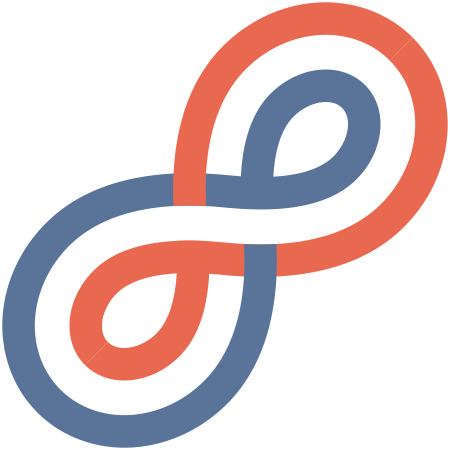Create Lasting Adaptations in Movement and Skill (Part 2, Awareness & Access)
So you want to help an athlete move a different way—a tweak of their squat or forehand. Whatever it is, you need to ensure athletes have the ingredients for the final product. Those ingredients are the five-tier hierarchy I mentioned in the last post.
Awareness—of the movement and access to it.
Endurance—sustaining the pattern under fatigue.
Strength—ability to keep the movement under high forces, recruiting enough motor units.
Power—Maintaining the moment with speed.
Skill—Integration into sport.
Awareness
Athletes are frequently asked to move certain ways in training, rehab, and sport, “Knees here. Shoulders there. Butt…somewhere.” These movements, to the coach, often seem as simple as “do as I say.” But too often, athletes have no idea how to find the desired movement. They lack awareness. The coach might as well ask them to find platform 9 ¾.
You need to help athletes discover how to move their bodies in the ways you want. With the clearest and fewest words possible, make the athlete acutely aware of what they are and are not doing. Your imitation isn’t enough. They must see and feel it for themselves.
Movement discoveries require your patience to let the athlete search. Once they have a vague idea of what to do, shut it so they can Mr. Magoo around, finding whatever it is you want. (A reminder to myself as much as it is to you.)
As soon as they’ve started to get it, record a video of them, hand over your phone, and ask them to point out the important bits to determine if you’ve actually coached or just talked at them.
Once they are aware, a door opens.
Access
So they found platform 9 ¾. Now ask them to go in and out of the position repeatedly like they’re Buddy the Elf, who just discovered revolving doors. (Yeah, I’ll mix those metaphors.) More explanation than that? Fine.
Let them repeat this new skill in isolation until they repeatedly succeed. I prefer little to no feedback at this stage. So, shh. It’s imperative that the athlete learns when they’ve got it and when they don’t. Help as little as possible.
Your mantra in the access phase is “Accuracy over range.” An accurate millimeter is better than an inaccurate mile. You play a critical role here.
Your feedback must be as accurate and refined as the movement you want. If your athlete can’t discern between the small differences you ask for, that’s on you. Your perceptions must become more sensitive. You must be able to see when the athlete moves the bones in the positions you want and when they don’t. And then effectively communicate what you want in a few clear words.
If they’re struggling, instead of impulsively ejecting instruction, I ask. “Do you want a hint or no?” (Asking the athlete how they want to be coached is a simple and invaluable tool.)
If they’re really struggling, read on.
Troubleshooting Access
So they didn’t find platform 9 ¾; that damned Dobby… (Last HP reference, I promise.) You’ve both tried, and the athlete still can’t do what you’ve asked. As much as culture would suggest trying harder, that backfires. The harder they try, the more their brain will repeat what’s worked before.
Make it easier, like a lot easier.
Ask the athlete to reduce their effort to somewhere between a 3/10 and 0.1/10. The less they try, the more likely they’ll succeed. If they’re trying less, you’ll see unnecessary contractions relax: uninvolved body parts will go limp. It’s surprisingly hard to do very little.
Again, you must be(come) perceptually accurate enough to coach them while they are between 30 and 0 percent intensity.
See what I really mean in the video below.
Tool One
Move their body for them. But there’s a caveat, act as if you’re moving a glass feather onto a bed of nails. Your hands must be so gentle that you don’t accost their proprioceptive system. This is a huge point and low-hanging fruit.
The firmer you grab, the more the athlete is aware of you instead of the thing they’re trying to improve—their body.
The lighter you touch, the more aware they can become. Ask them to be a passenger and just feel what it’s like to move this way. Then move them that way. Stop the moment you feel resistance. This is NOT the time to coerce ROM.
Tool Two
Your second tool is 0/10 effort. Imagination. Visualization does a lot more for movement than you’d expect from lying still. If their mind's eye can see the movement you both want, there’s a higher likelihood of getting it in the future.
In conclusion, the outcomes you want to see have prerequisites, ones rarely crafted by a culture seeking more effort all the time. Ensure that whoever you coach has the ingredients to do what you ask.
Your clients need tibial internal rotation before you ask them to improve their dorsiflexion or squat. They need pronation and shoulder external rotation to bring their elbow in during free throws. They need to be able to rotate their pelvis over a stable femur before you ask them to rotate their hips better.
Be sure to read the next post in the series to learn how to progress from here into endurance, strength, and power.
Lastly, huge thanks to my colleague, Aaron Quinn, for showing me the value of subtlety.

